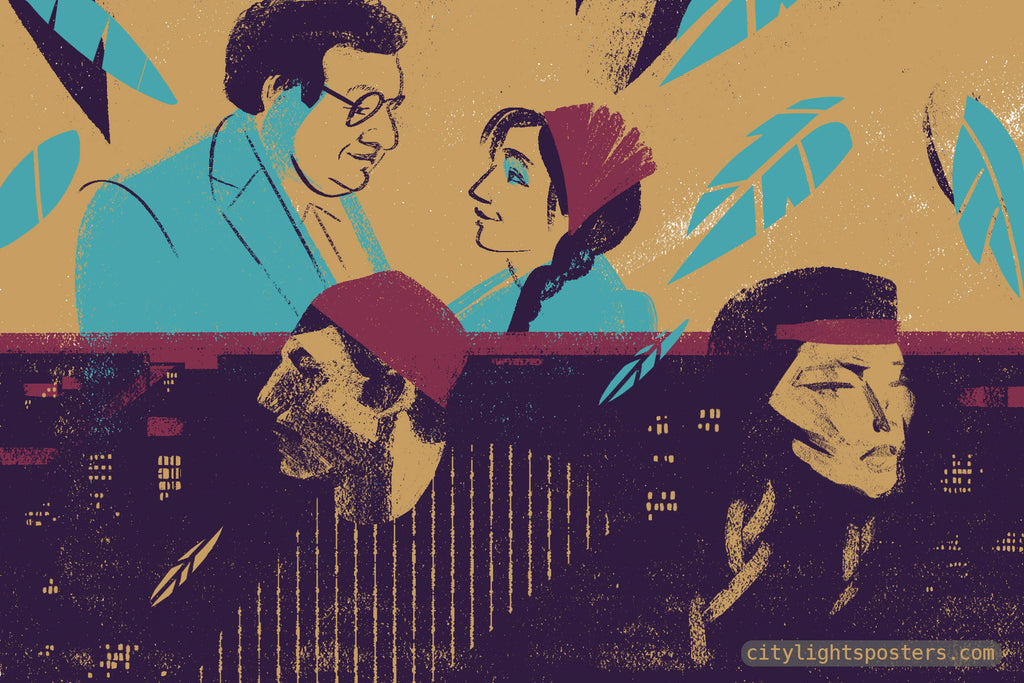The Rural-Urban Binary in Egyptian Film and Culture

By Yasmine Ahmed


Film 1: The Caller (An-Nadaha), 1975
Closing scene: Fathiya (played by Magda), an ambitious villager, leaves her husband Hamid (played by Shukri Sarhan) at the train station: he departs Cairo and she decides to remain in the city. She strolls over a bridge, daydreaming about her future in the metropolis.


Film 2: Missing Person (Kharag Wa Lam Ya’od), 1984
Closing scene: Atiya (played by Yehia El-Fakharany) is a low-level government employee who decides to remain in his native village with his new love Khayriya (played by Laila Elwy), in an attempt to escape the chaos of Cairo. He leaves a newspaper in the taxi that was supposed to take him back to the city.
The closing scenes of these two films, Missing Person directed by Mohamed Khan (1942-2016) and The Caller directed by Kamal El-Sheikh (1919-2004), express two contrasting narratives that highlight and reinforce the rural-urban social divide in the Egyptian context. Both films are written by the same screenwriter, Assem Tawfik (1931-2001), and are inspired by other stories: the first by H.E. Bates’ The Darling Buds of May (1958) and the latter by a story of the same name from Egyptian novelist Youssef Idris (1927-1991).
The relationship between “rural” and “urban” social contexts, specifically as related to contemporaneous Egyptian norms, are readily available to explore in both films. Visual representations in the films' poster designs expose certain of the dominant forms of narrative fiction (focusing primarily upon film) and discourses of marginality and exclusion.
In The Caller, the classic story unfolds of a rural couple migrating to the city in search of improved socioeconomic conditions and a better life. The film begins with one of the recently migrating women showing off “urban” goodies and recounting her story as a porter in Cairo; this is the story that motivates Hamid and Fathiya to move to the metropolis.
In her Cairo journey, Fathiya becomes overwhelmed by the spectacle of the city lights. She is overcome by the endless potentialities of assuming a city identity: one who may be indifferent to others, but individually special and able to realize their own needs. In the final scene, she leaves Hamid behind in the station and returns to the city while imaging her future, one time as a nurse, another time a factory worker. Fathiya has been called by the caller (an-nadaha), in this case the metropolis of Cairo; there is an irresistible magnetism generated by the city that makes her return to village life impossible.
In the poster for The Caller, Fathiya is colored in a progression of colorful hues, beginning with a murky purple color and progressing to a vibrant, heavenly yellow. Although the designer duplicates the same image, the added color filter dramatizes Fathiya’s Cairo journey: the film has a dramatic and empowering ending, and so does the poster. In the film, Fathiya is unwilling to return to her rural roots despite being exposed to gender- and class-based harassment by a Cairene upper-class man living in the building where she and Hamid work. While Fathiya is no longer bound to the traditions of her village, she is trapped in the lower strata of the Cairene setting due to her class position. She is welcomed to join the indifferent urban “other”, but not permitted to become a hanim (an upper class citizen). Her integration in the city is conditional upon meeting certain social criteria that she still lacks, despite her intelligence. She has to become literate and to transcend whatever is left behind from her village of origin.
 |
Atiya, the protagonist in Missing Person, suffers limitations in Cairo due to the middle-class marriage traditions that are imposed on him. He is forced to come up with money that he simply does not have. He moves back to his native village and it is there that he finds peace, in a village that is depicted and framed (as we see in the film's poster) as essentialized and unchanged, despite the ongoing transformations witnessed by village residents in this period (e.g. rural-urban migration, labor migration to the gulf, agrarian transformations). The binary divide between his life in Cairo and his stay in the village (though only as a visitor until the end of the film) is obvious and clear: the city is dull and oppressive, as opposed to the exciting and spiritually liberating countryside.
In this story, Atiya does not find freedom in the city, despite the indifference it imparts to him: he is indifferent precisely because he is oppressed. To reinforce the opposition between his life in the city and that of the village, we observe that in his stay in the village he was noticed, he was not indifferent (at least to his host family and his soon-to-be lover), and he was able to escape the constraints of customs and traditions imposed by his class position in the city.
Regaining his identity as “somebody” in the village, however, is not represented in the film's poster. Despite the fact he is the protagonist, he appears in the corner of the poster, in a smaller size than the characters of his host family, the father and his daughter. In fact, the daughter appears twice in the poster, in very rural imagery: once in the foreground riding a donkey, and again in the background in a framed photo with a cow.
 |
The social and cultural processes that shadow urbanization were a subject of study by 19th and 20th-century urban sociologists. In his The Metropolis and Mental Life (1903), Georg Simmel frames the concept of “indifference”, which for him is a defining characteristic of city life, whereby the individual is liberated from social constraints and accorded the chance to set and achieve personal goals. For Simmel, indifference is a significant element of an individual's transition and evolution from the rural to the metropolitan social context.
In his work, Simmel discusses the transition to modern life, with the focus on the big city and its incessant stimuli as a primary location whereby the individual's position in this new urban life and attendant psychological coping come to being, as opposed to the village which is bounded by the mentality of the small community. The Caller and Missing Person both operate outside the linear transition depicted by Simmel.
Atiya and Fathiya are thus positioned at the two opposite ends of the rural-urban divide spectrum. While Fathiya may fit in the city conditionally, Atiya fits unconditionally within the traditions of village life. Despite all the differences, the two stories reinforce an urban hierarchy, whereby the village (and its residents) represent an objectified site of desire for the urban, whether it is Fathiya or Khayriya.
Discover City Lights Posters’ Stories from Rural Egypt collection.
Subscribe to our newsletter to receive the latest latest blog updates, poster releases, and special offers.
